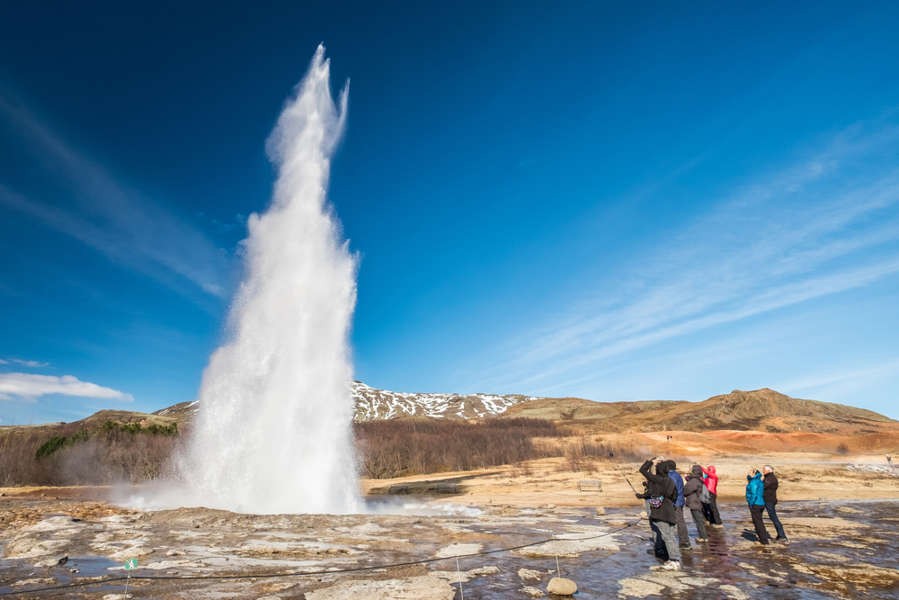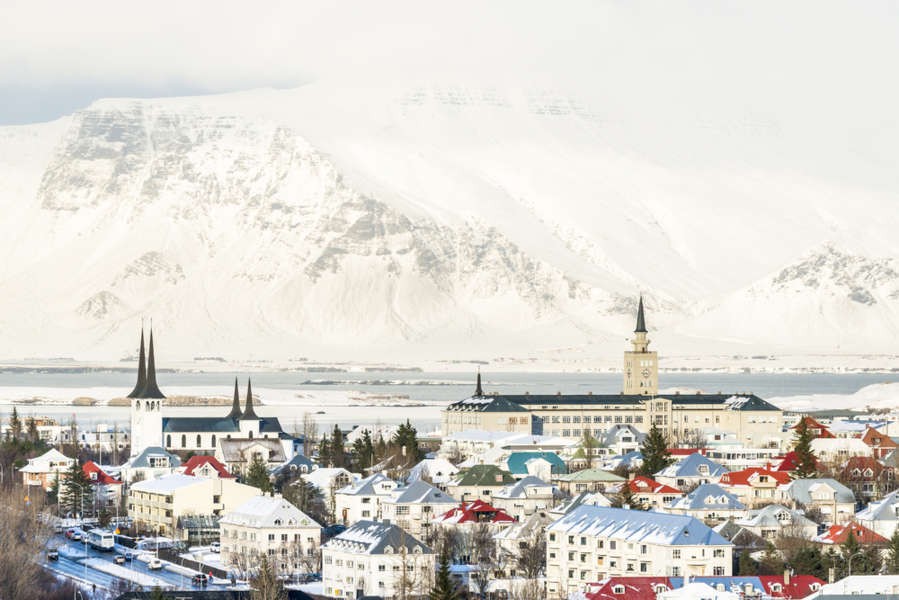Iceland is an extremely popular destination for road trips. In spite of its fairly undeveloped highway system, it’s easy to navigate around the country. This is thanks to Route 1, the Iceland ring road which runs parallel to the coastline all the way around. So, the best way to explore all the land of fire and ice has to offer is to drive the ring road, with occasional detours. But which way, you ask? Clockwise or counterclockwise? Let’s take a look.
Is it Best to Go Around Iceland Clockwise or Counter Clockwise?
The Ring Road in Iceland can be driven either way. Though it circles back, a counterclockwise route is often favored. But, why choose between one direction or the other?
Well, the first consideration regarding which direction to travel in is the weather. ‘Follow the Sun’ is the best piece of advice. Check the forecast and if the weather looks better in the north on the first few days of your planned trip than in the south, go clockwise.
Iceland is known for its bad weather, and in the spring, autumn and winter, sandstorms, snowstorms, and strong winds are common. Things are a little more relaxed in the summer, but it has been known to rain a lot even then. So, follow the Sun. You can find detailed forecasts on the Icelandic Meteorological Office’s website.
The second consideration is what you want to start and end your trip doing the Westfjords, in the northwest of Iceland, it is a peaceful place to visit. They’re not actually covered by the ring road, so you’ll have to detour a little. Making the Westfjords one of your last stops before traveling back down to Reykjavík would be a great end to an adventure.
It would also mean you could start your trip southwest of the capital, at the Snæfellsnes peninsula, where you could drop in at the Blue Lagoon and hike through Snæfellsjökull National Park. After that, you could join the ring road and make your way counterclockwise around the island, ending up in the Westfjords towards the end.
There are so many ring road itineraries to choose from, the third consideration is, why choose between one direction or the other? After you have visited Iceland once, why not come back a second time and travel the ring road the opposite way? There are so many things to see, you would have missed out on some the first time. If you are hiring a car in Reykjavik, ask your car rental company for options and advice. They will have an idea of the best route to take for the specific season in which you are traveling.
Why do many itineraries in Iceland recommend going anti-clockwise?
The reason is simple, there are far more stops in the Southern Region of Iceland that in any other part of the country, for the most common itineraries. The most well-known touristic points and destinations are located in South Iceland. At the beginning of your trip, you will have plenty of time to cover all of them. If the weather toughens or if your pace gets slowed down, you can always speed up your trip later on without missing the most important spots in Iceland.
Another factor is the energy and stamina. If you start your trip clockwise, by the time you reach the southern area of the island, you might have been touring for 5 to 6 days already. Getting up early, heading back to bed quite late, doing activities all day long...and so on. The activities in the Southern Highlands of Iceland and the Southern coast do require a bit of strength if you want to enjoy them at its fullest. You don't want to miss the opportunity of climbing a glacier at Skaftafell because you're drowsy and tired, right?
Places to Stop on a Ring Road Trip
For this instance, I’ll describe the route in counterclockwise order:
The Golden Circle
Only a part of the Golden Circle utilizes the ring road. The rest of the stops are further north and inland, making use of other highways. This is the most famous tourist trip to take in Iceland and consists of three main stops: Gullfoss Waterfall, Geysir Geothermal Area, and Þingvellir National Park.
Gullfoss is one of Iceland’s most famous waterfalls and is stunning to see any time of the year. The Geysir geothermal area is a large expanse full of boiling mud pits, and the chief attraction is Geysir, one of the largest geysers in the world. Þingvellir National Park is renowned for two reasons. It is the site where Iceland’s (and the world’s) first parliament was held and is also a spot where you can stand on two tectonic plates at once. Iceland is being split in two, as half of it is located on the North American plate and half on the Eurasian plate. Þingvellir is at the center of this split.
Aside from these three wonders, there are many other great places to explore in the Golden Circle area, such as the Secret Lagoon, Iceland’s oldest swimming pool. It’s actually a fantastic place to see the northern lights from in the winter months.

All Along the South Coast of Iceland
The south coast section of Route 1 is regarded as one of the best parts of an Iceland road trip. Start with the Seljalandsfoss waterfall. It’s 60 meters (200 feet) high and is one of the only waterfalls in Iceland that you can walk behind. The waterfall actually featured in one of Justin Bieber’s music videos:
It’s a little off the ring road, up Road 249, and there’s a nearby car park which charges for its use. Don’t try to walk behind the waterfall in the winter; only when the weather is good. Next along the coast is Reynisfjara black sand beach at Vík. There are some fantastic basalt columns and rock formations to admire there. That takes you just under half-way across Iceland, approximately 180km (112 miles) from Reykjavík.
Further along is the Eldhraun lava field, a 565sqkm area covered with lava from previous eruptions. Sitting atop the lava is bright green moss. Please don’t walk on the moss; it is very delicate and grows very slowly. Last of the well-known south coast stops is Jökulsárlón Glacier Lagoon. It’s where the famous Diamond Beach is located, where chunks of glacier ice sit spread around on a black sand beach. You can also take a boat tour in the glacier lagoon, and go ice caving.
All Along the North Coast
It’s highly recommended to stop at Lake Mývatn, a glacial lake in the north. Nearby there is the Mývatn Nature Baths, another of Iceland’s incredible geothermal spas. A little further and you come to Goðafoss, or ‘The waterfall of the Gods’. Be sure to snap some pictures of this marvel.
After Goðafoss you reach Akureyri, Iceland’s second-largest urban area. If you’re heading there in the winter months, it has a fantastic skiing/snowboarding hill: Hlíðarfjall. Since it’s so far north, the snow there is generally fantastic. Note that if you are driving the ring road in the winter, the weather can become extreme. Roads will be closed if they are unsafe to drive on due to heavy snow or ice.
Akureyri is also a great place to visit in the summer, with plenty of hikes and great events to entertain you. Keep going and take a 45-minute detour off the ring road to Hofsós. Here you will find a naturally heated infinity pool that overlooks the Atlantic Ocean, offering spectacular views on a good weather day. Head further west and you reach the Westfjords. As I said before, the ring road doesn’t reach up to them, but it’s worth detouring to see some spectacular waterfalls and rural Icelandic towns.
As you head back down the west coast and towards Reykjavík, stop at Mount Esja and hike up it. It’s only a short distance north of the capital and it takes a couple of hours to reach the peak. The reward is some stunning views of the surrounding area. This hike is best left attempted only in good weather, and when there hasn’t recently been heavy snowfall.

How Long Does the Ring Road Take?
In theory, you could drive the ring road in a day, but that would be without stopping at any of the aforementioned places of interest. The ring road is 1332 km (828 miles), with mostly a 90kmph speed limit and two lanes. There are some single-lane bridges, so keep an eye out for those and approach with caution. There’s no limit to how long you can take to drive around the ring road, but a week would give you a good opportunity to have an adventure without rushing. So, take the road clockwise or counterclockwise, the choice is yours. Whatever the season, bring warm, waterproof clothing and prepare for the possibility of bad weather.


 By
By


